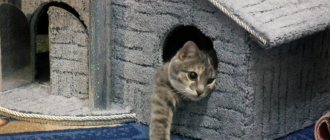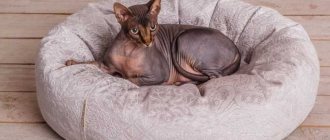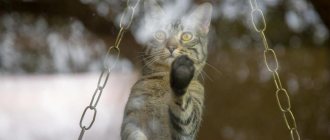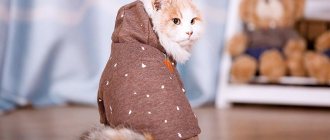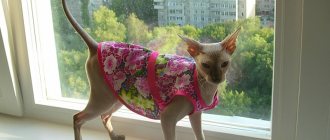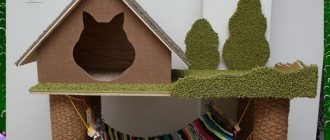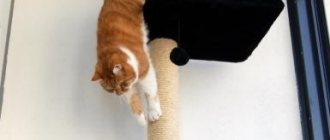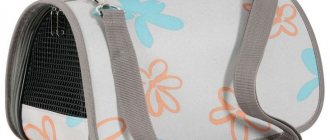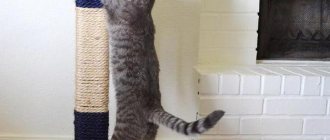Cat siblings spend a lot of time with each other in their early years as littermates and companions. However, if they are not spayed or neutered before they reach 6 months of age, closely related cats will begin to mate with each other, leading to a number of genetic problems.
Cats don't understand the taboos surrounding incest. Siblings of cats can mate when they reach the reproductive stage. To prevent this from happening, make sure your cats are spayed or neutered before they are 6 months old. Line breeding or inbreeding is not recommended unless you are familiar with your cats' lines.
Why cats mate with their siblings has puzzled owners. But once you understand the psychology behind it, it won't be so difficult. What's complicated is what actually happens when cats mate with siblings.
History of hybrid breeds
The dream of having wild animals in the house is not at all a tribute to modern fashion, as can be judged by the increasing demand for hybrid breeds in recent years. Back in the 60-70s in the USA, wild Asian and African cats were crossed with domestic ones. Initially, the Americans did not intend to engage in commercial breeding, but only wanted to gain new scientific experience from their experiments.
However, everything soon changed when the offspring of an Asian Bengal wild cat and an American domestic cat were born as part of a project to create a vaccine against leukemia - after the study, scientists donated the kittens to private individuals. The combination of the exotic appearance of a wild cat with the tame nature of a domestic cat captivated cat lovers and aroused great interest, which fueled demand, so crossbreeding was resumed.
Tips for choosing a mixed-breed kitten
Since in the category of mestizos there are no clear requirements for breed qualities, when choosing a pet you should pay attention to other characteristics:
- In a mixture of a British Shorthair and a regular cat, it is worth studying the animal's coat - the variety of colors sometimes leads to very unusual combinations and shapes. Each kitten will eventually find its owner, but not every owner wants to get a pet with an unusual color. For example, there are people who categorically do not accept black cats of any breed, while others intuitively avoid tortoiseshell coloring.
- A mixed Siamese and British cat kitten may be born with thin “Siamese” paws. If a pet inherits a powerful body from a Briton, then it will be difficult for him to maintain a lot of weight. This may manifest itself as stiffness of movement during games. In the future, this symptom may disappear or develop into a serious problem with the musculoskeletal system.
- An objective indicator of an animal’s good condition is its fur. If it bulges, does not lie flat, clumps into small icicles and does not shine, it means the kitten has health problems.
This is interesting! Mixed breeds have a low threshold for reblooming. The color tone, which is established by 3-4 months, as a rule, does not change later.
What are the hybrid cat breeds?
Today there are a number of recognized hybrid breeds. The Bengal cat is the most famous and popular breed among owners, but there are other equally impressive crossbreeding results.
Bengal cat
Bengals are a mix of Asian wild and domestic cats and are one of the most popular hybrid breeds today. These cats are loved for their wild appearance and variety of colors and patterns that make them look like small leopards.
Chausie
The Chausie is a cross between an Egyptian mud cat and a domestic cat, especially popular in its place of origin and main breeding - the USA. Although Chausie has no noticeable coloring, his distinctive lynx-like ears, high cheekbones and athletic build give him an exotic appearance.
Savannah
The Savannah cat breed is a cross between the African Serval and a domestic cat. The Savannah is not only the largest hybrid cat breed, but also the largest overall of all recognized cat breeds. These animals have a pattern similar to the spots of a cheetah, reach up to half a meter in height at the withers, and up to 1.2 m from the nose to the end of the tail.
Caraquet
The first mating of a female wild caracal and a feral domestic cat occurred in 1998 at the Moscow Zoo. Less than ten years later, breeders in the United States began similar experiments, but with the help of a male caracal and a female Abyssinian cat.
Bristol
Bristol cats were created by crossing the margay, which lives in the wild in Central and South America, with a domestic cat. They had typical representatives of this wild cat. The body structure and head shape resembled that of a domestic cat.
Unfortunately, due to numerous problems in the breeding process, especially due to infertility of kittens, the breed is considered extinct. Several fertile Bristol kittens were used to breed Bengals.
New efforts are still being made to cross domestic breeds with wild species. The newest but unpopular hybrid breeds include: Kanaani, Tilaran, Vivveral or Safari.
This article is addressed to those cat lovers and owners of catteries, as well as the chairmen of those clubs and associations whose main goal is to consolidate and improve the pedigree qualities of their animals through purebred breeding and selection (selection). Let us immediately emphasize that since selection involves strict culling, this goal comes into conflict with commercial cat breeding, where the main goal is profit. Inbreeding as a component of purebred breeding. In the course of his work, the breeder must decide which females should be mated with which selected males so that their offspring will combine certain characteristics and acquire improved traits. This selection event is called selection of pairs for crossings. The selection of pairs should be carried out systematically and systematically, and its goal is to change the genetic structure of the animal population of a given nursery in the desired direction or to preserve and consolidate a certain combination of valuable traits in the offspring. Sometimes, to breed new breeds or introduce completely new characteristics into a breed that were not previously characteristic of it, interbreeding or even interspecific crossing is used, but usually the main direction of the breeder’s work is the so-called purebred breeding - mating of individuals of the same breed.
Purebred breeding is divided into two types: outbreeding - a system of unrelated matings of animals within a breed, and inbreeding - a system of matings of individuals having a close degree of relationship, such as brother-sister, father-daughter, mother-son, cousins, etc. . In general, inbreeding assumes that the mated individuals - the future father and mother - have common ancestors or at least one common ancestor. Although for specialists the importance and necessity of inbreeding in purebred breeding is obvious, among amateurs there are a lot of myths and prejudices, both against inbreeding itself and against the use of inbred sires in breeding. (We will say in advance that the latter is a particularly big mistake, since inbred selective sires are, as a rule, prepotent - their children turn out to be mostly like their father - and also often produce exceptionally strong offspring.)
Genetic basis of inbreeding
. What is the biological (genetic) essence of inbreeding? All modern breeds of animals, including cats, are heterozygous for many genes. This means the following. The zygote - a fertilized egg - receives one complete set of genes from both the father and the mother, so that it has a double set of them. If both genes responsible for a given trait - one from the father and the other from the mother - are identical, then this condition is called homozygous for this gene, and an individual homozygous for this gene will develop from the egg. If the genes of the equivalent pair, for example, those determining the formation of black hair pigment, are different (say, the father passed on the black color gene C, and the mother passed on a modified, for example, Himalayan, cs gene), then the individual will turn out to be heterozygous for this gene (Ccs). In the latter case, the black color gene is dominant, and the animal will be externally (phenotypically) black, but will be a carrier of the recessive (hidden) Himalayan gene. If such a heterozygous animal - let it be a black cat, a carrier of the Himalayan gene - is crossed with its sister, also a black cat, carrying a hidden Himalayan gene, then a split will be observed in the offspring (Fig. 1): part of the offspring will be black in color (CC - homozygous , and Cсs are heterozygous genotypes), and the other part is Himalayan (сссs homozygous genotype). This happens because when crossing this black cat with his black sister, their gamete sex cells (sperm and egg) - carrying a single set of genes, will occur in all four possible combinations: C from cat and C from cat, C from cat and cs from cat, cs from cat and C from cat, cs from cat and cs from cat. Therefore, with a probability of 1/4, two Himalayan genes (one from the father, the other from the mother) will converge in one zygote and give a homozygous Himalayan genotype and, therefore, a Himalayan phenotype in some kittens of the litter. The other part of the litter, with the same probability of 1/4, will be homozygous for the solid black gene (CC). Thus, the genetic essence of inbreeding comes down to the process of decomposition of a population into lines with different homozygous genotypes. Since during inbreeding, genes that were in a heterozygous state pass into a homozygous state; in the next generation, when crossing homozygous animals of the same color, no splitting will be observed. In this way, with the help of inbreeding, hidden traits are identified, desired traits are consolidated in generations, and stable genetic lines are created.
The fastest practical way to increase homozygosity in higher animals is to mate siblings who have the same father and mother (it makes no difference whether the sibs are taken from littermates or from different litters), as well as to mate father and daughter or mother to son.
The opinion sometimes expressed among non-professionals that, they say, it is possible to mate a father with a daughter, but not a mother with a son, is a myth that has no basis; the effect of both types of inbreeding is exactly the same. If such close inbreeding (incest) is carried out for 16 generations in a row, then 98% homozygosity is achieved for all genes, and therefore, due to the absence of segregation, all individuals of these litters become almost identical in genotype and phenotype - all children are identical, like twins, Of course , in practice, a much smaller degree of inbreeding is usually used, and accordingly a much lower degree of homozygosity is achieved.
It should be noted that the mating of second cousins (common great-grandfather) leads to an increase in homozygosity by only 2% over an infinite number of generations. Consequently, inbreeding of this type is already fundamentally different from closer degrees of inbreeding and essentially does not lead to the achievement of the goals that are placed before the system of consanguineous matings. Breeders who, for one reason or another, avoid inbreeding may not be afraid to mate second cousins.
Determining the degree of inbreeding and the inbreeding coefficient in cats
. Based on the analysis of the animal's pedigree, it is possible to qualitatively assess the degree of inbreeding, which is expressed by the saturation of the pedigree with common ancestors (nicknames) on the maternal and paternal lines. According to Shaporouge, Roman numerals denote generations (a series of ancestors), counting the parent as the first, grandfather as the second, etc. If a common ancestor is repeated in both the maternal and paternal parts of the pedigree, then its occurrence in the maternal pedigree is indicated first, and then, after a dash, in the paternal pedigree. Then the crossing son x mother will be designated as I-II (Fig. 2, a), father x daughter as II-I (Fig. 2,6), brother x sister as II-II (Fig. 2, c, d) , grandfather x granddaughter as III-I (Fig. 2, e), cousins x sister as IIIIII (Fig. 2, f), etc. Inbreeding type father x daughter (II-I), son x mother ( I-II) and brother x sister (II-II) is designated as very close, or incest; inbreeding type II-III or III-II is close inbreeding; and crossing III-IV, IV-III, IV-IV, II-V, etc., is moderate inbreeding. Due to the lack of perceptible effects, more distant inbreeding may in practice not be considered true inbreeding. Owners of high-quality purebred cats, having picked up the cat's pedigree, can themselves assess how often and to what extent inbreeding was used by the breeders who participated in the breeding of this pet.
To quantitatively take into account the degree of inbreeding in the pedigree of an animal and thereby determine the measure of its homozygosity, the English geneticist S. Wright introduced the concept of inbreeding coefficient (F). This coefficient is calculated as follows. First, the number of generations (arrow - such as in Fig. 2) from the common ancestor A of the father and mother to the father of a given animal (p) is calculated, then the number of generations (arrow) from the same ancestor A to the mother (m). These numbers are summed up, and one is added to the sum: n = p+ m+ 1. The inbreeding coefficient of the analyzed animal (proband X) for this ancestor is equal to 1/2 to the power of n: Ga = (1/2)n. If the father and mother have several common ancestors, then the coefficients are summed up: Fx =EF, =E(1/2)n, where i are the common ancestors of A, B, C, etc.
As an example, let’s calculate the inbreeding coefficient of an animal (proband X) obtained from crossing siblings (II-II, Fig. 2c). In the pedigree, the distance (path) from grandfather to father is 1 generation, from grandfather to mother is 1 generation, therefore, n = 1 + 1 + 1 = 3, which means Fв = (1/2)3 = 1/8. But they have one more common ancestor - their grandmother; from her to her father is 1 generation, from her to her mother is 1 generation, and therefore Fa will also be 1/8. The overall inbreeding coefficient for X is Fx = Fa+ Fb = 1/8+ 1/8 = 1/4, or 0.25.
Another example is the crossing of a grandfather with a granddaughter (III-I, Fig. 2,e). Here the offspring on the paternal line have no generations (arrows), i.e. 0 generations, on the maternal side - 2 generations, whence n = 0 + 2 + 1 = 3, and then Fx = (1/2)3 = 1/8, or 0.125.
Finally, an example with crossing cousins with sister (III-III, Fig. 2, f). The common ancestors of their offspring are their great-grandfather and great-grandmother. From great-grandfather to father - 2 generations, from him to mother 2 generations, i.e. n = 2 + 2 + 1 = 5, and accordingly Fb = (1/2)' 1/32. The same is obtained when calculating the inbreeding coefficient for another common ancestor - great-grandmother: Fa = (1/2)3 = 1/32. Therefore, the total inbreeding coefficient Fx = Fa + Fb = 1/32 + 1/32 = 1/16, or 0.0625.
From available pedigrees, each breeder or owner of a purebred animal can calculate the inbreeding coefficient of their pets or their parents and grandparents - if inbreeding was used in their production. As already mentioned, this coefficient is an indicator of the degree of purity (homozygosity) of the lines participating in the pedigree, as well as an indication of the possible prepotency of the corresponding sires and/or female sires (see below). The higher the inbreeding coefficient of an animal, the more of its genes are in a homozygous state. Naturally, as follows from the formula, the inbreeding coefficient cannot exceed one.
Inbreeding depression and heterosis
. Why is it that in human society, in most civilizations, there is either a direct ban on incest or condemnation of it? Moreover, why in the wild is everything adapted in such a way as to avoid inbreeding and homozygosity as much as possible? The main reason is that both wildlife and human society require a variety of genotypes and individuals in the population to successfully survive and adapt to changing environmental conditions (including social and economic conditions in the case of human society). In a diverse community there will always be individuals best adapted to a given specific situation; however, the situation is changing - and other individuals, with other signs, float to the surface. The uniformity of a population, although well adapted to the given specific conditions of its existence, dooms a biological species to extinction when conditions of existence change. Thus, the desire to create diversity is necessary not for individual individuals, but for the entire species to meet the various and changing demands of the environment and the historical process .
But there is also a direct danger of inbreeding for individual individuals. The fact is that both during the individual life of an animal (and a person), and over generations, mutations—gene changes—occur from time to time. Most mutations are harmful, and if they immediately manifested themselves, they would lead to death (lethal mutations), deformities, abnormal behavior, inconsistencies with the environment, etc. However, most mutations are at the same time recessive in nature, i.e. in combination with a normal paired gene, due to the double set of genes, does not appear in the heterozygous state. The burden of such harmful, but not manifested, hidden mutations is present in every heterozygous individual, including every person. Inbreeding creates homozygosity, including homozygosity for harmful genes, and, consequently, leads to their phenotypic manifestation in the offspring - intrauterine or early death, deformities , reduced viability, etc. This phenomenon is called inbreeding depression.
Let's ask the opposite question: why, despite the danger of inbreeding depression, do breeders who breed and improve domestic animals so often resort to inbreeding and are not afraid of it? The answer is simple: breeders do not strive to ensure maximum survival, vitality and high qualities of all offspring, but select the best, culling (for example, castrating) defective, weak and simply undesirable traits. Thus, during inbreeding, when the genotype is decomposed into homozygous lines, harmful recessive genes appear and are removed from further breeding, and all “good” genes and their combinations are fixed in a homozygous state and left for further generations. Thus, inbreeding in the hands of a breeder is a way of removing the load of harmful mutations from the genotype, on the one hand, and creating the necessary combinations of valuable genes and traits, on the other. In addition, thanks to homozygosity, the homogeneity necessary for breeding any new breed is created, meeting the requirements of this breed, and the corresponding valuable traits are fixed in the offspring. It should be noted that as inbreeding and selection of the best, due to getting rid of the burden of harmful hidden mutations, the danger of inbreeding depression during inbreeding of selected inbred animals decreases.
When crossing between representatives of different independent inbred lines, a phenomenon can be observed that, in a certain sense, is the opposite of inbreeding depression - heterosis, also called “hybrid vigor.” Such hybrids of two inbred animals usually show increased vitality, growth, fertility, etc. This occurs because when crossing between two inbred lines selected and therefore similar in typical characteristics of the breed, homozygosity for these selected characteristics is preserved in the offspring, whereas the remaining harmful mutations that are not rejected are transferred to a heterozygous state and thereby become recessive, i.e. do not appear.
Practice the goals of inbreeding cats. Let us consider in general and summarize the tasks that are performed and the goals that are pursued by livestock breeders, including cat breeders, when using inbreeding.
First, inbreeding is necessary when developing a new breed or a new group within a breed. To increase genetic diversity and attract new traits, the breeder crosses animals of different breeds. The resulting hybrid offspring is heterozygous and will therefore produce segregation in subsequent generations. To consolidate the desired combinations of traits, inbreeding is mainly used close, such as brother x sister, father x daughter and mother x son. As a result of inbreeding, homogeneous families are created and a constant manifestation of traits is achieved. Among inbred offspring, up to 80% of the animals are strictly culled - defective, weak and not meeting the intended standards.
In Fig. Figure 3 shows an example of very close inbreeding when breeding Himalayan cats with lilac markings (lilac point) in the English Mingchew cattery. A cat with a chocolate-point color - Snuff - was obtained by crossing a Tromo cat, with a seal-point color, a carrier of the chocolate and blue genes, from the American nursery Briery, with a Siamese cat Trayvia, also a seal-point and also a carrier of the chocolate and blue genes, from cattery Mingchshch, This chocolate-point cat (Snuff) was bred with her father, the cat Tromo. The cat Chock, a seal-point, born from them was bred with his mother, the cat Snuff, a chocolate-point. From them the first cat with lilac markings (lilac point) was born - Sulatri. It is worth noting the very high inbreeding coefficient of Sulatri: P 3/8, or 0.375, i.e. higher than when crossing siblings.
Secondly, close (very close) inbreeding is used in cases where it is necessary to identify producers who are carriers of lethal, semi-lethal and other undesirable genes. This is the so-called test inbreeding. Based on the results of test inbreeding, various decisions can be made: either such sires are discarded or used to produce homozygous offspring (through inbreeding) with the culling of defective ones and the selection of the best ones, thereby achieving purification of the genotype from unwanted genes.
Thirdly, the purpose of inbreeding may be to breed a highly potent producer, that is, one that effectively passes on its traits to children. It is known that inbred animals have a higher individual prepotency compared to individuals obtained from unrelated crosses. Because of this, it is a widely accepted practice in animal husbandry to mate an inbred male with a non-inbred female; This practice is called top crossing. It is important that a good inbred producer, passing on his selected qualities to his descendants, can significantly improve the nursery stock and give it its own face, its own peculiarity, its own type.
Fourthly, sometimes breeders create inbred lines in their nurseries, so that later, by crossing representatives of different lines (often this is done in cooperation between different nurseries), they can obtain the effect of heterosis - powerful, large, resilient and fertile offspring.
In conclusion, we would like to emphasize that in order to conduct breeding work - including with cats - it is necessary to use systems of competent selection and selection of animals. In this case, selection is distinguished by phenotype and by genotype. Cat lovers are well acquainted with cat shows of various levels, where class assessment (in professional language - grading) of cats is carried out. This is an assessment based on phenotype. Assessment by genotype should be carried out based on the pedigrees of animals and the quality of their offspring. Generally speaking, the breeding value of an animal can be determined only by evaluating the sire by the quality of his offspring. An animal of excellent phenotype will not always be a good producer. Livestock breeders have a catchphrase: “A good bull is worth half a herd.” The same is with stud cats: the quality of the cattery and its personality is largely determined by the stud cat (or stud cats, if there is more than one). Such a stud cat must be highly prepotent, and therefore breeders should turn their attention to inbred studs. Moreover, you cannot create a good nursery by simply purchasing expensive animals with champion and grand champion titles abroad. It is necessary that in the nursery itself and from the nursery producers on the side, animals of the international champion and grand champion level are born. And this requires competent breeding work, in which inbreeding plays a significant role.
Why is hybrid breeding problematic?
Crossing domestic cats with wild cats is a controversial issue. Many animal rights activists are of the opinion that this process is harmful to animals because the individuals being mated are significantly different from each other and mating should not be allowed for ethical, genetic and medical reasons.
This fear is not unfounded, since there are indeed many miscarriages and birth defects, especially in first-generation kittens. The reason for this is probably because the length of pregnancy varies greatly between domestic and wild cats. In domestic cats, pregnancy usually lasts from 63 to 65 days, while in wild cats it usually lasts from 76 to 78 days. Not only pregnancy itself is dangerous, but also mating animals.
Serengeti
- Lifespan: 10-15 years
- Temperament: active, lively, affectionate, loyal, sociable, vocal
- Colour: Striped, silver, golden, grey, with spots and leopard markings
- Height: up to 60 cm
- Weight: 6.8-10 kg
- Comparable breed: Serval
Unlike the Highlander, the Serengeti can already officially compete in championships because they have received the appropriate status from the International Cat Association. The Serengeti was developed by crossing the Bengal and Oriental Shorthair breeds.
This cat began to be bred in the 1990s in an attempt to produce a domesticated wild serval . The Serengeti has a spotted body, long legs and large ears. The male is usually larger than the female. These felines are highly athletic and are known for their loyalty, energy, and agility. They are able to create strong bonds with people.
Legal regulations regarding keeping hybrid cats
The breeding of hybrid cat breeds is subject to strict compliance with animal rights, as is their subsequent maintenance. In many countries, a person who wants to take a kitten from the first to the fourth generation under his roof must follow certain rules and provide optimal living conditions for the demanding cat.
From the fifth generation, when the percentage of wild genes in a kitten is only 1.6%, it is considered a domesticated breed that can be treated like any other breed of domestic cat.
Do cats mate with their brothers and sisters?
Cat siblings do indeed mate with each other. Like all mammals, mating is a basic instinct for cats.
When a female cat goes into estrus (heat), the male cat follows his instinct to pass on his genes. A cat's body chemistry will tell her when to mate and when it is the right time for the female to reproduce. Therefore, cats will mate even if they are from the same litter.
However, this does not mean that inbreeding always occurs naturally. The study, published in the journal Brill, examined female control of paternity during copulation. The researchers found that, in general, female cats avoid inbreeding with close relatives during copulation, but not with distant relatives.
When considering feral cats isolated from other colonies, they have no choice but to breed with their siblings and other family members to maintain the colony. However, the report shows that feral cats prefer to seek mates outside their direct bloodline if other cats are available.
Black market for illegally crossed animals
Despite the above-mentioned obstacles, interest in wild beauties is steadily growing, and professional breeders are unable to meet the demand, so trade in illegally bred hybrids is developing in many countries.
Many owners care for cats of unknown origin, unknown generation, who still exhibit wild animal characteristics and behaviors that are problematic to coexist with and raise.
They can be very fearful and reluctant to deal with people, usually being active at night and willingly releasing their claws on every occasion. This is felt not only by household members and other pets, but also by furniture, walls and parquet floors. In addition to aggressive behavior, hybrid breeds also exhibit a much stronger tendency to mark territory with urine.
Highlander
- Lifespan: 10-15 years
- Temperament: affectionate, gentle, intelligent, sociable, energetic
- Color: Various colors, including spotted patterns
- Height: 25.4-40.6 cm
- Weight: 4.5-9 kg
- Comparable breed: Maine Coon, Scottish Fold
Highlanders are still an experimental cat breed. However, work on its creation began back in 2004 after crossing two hybrid breeds - the desert lynx and the jungle curl. The original name for this breed was Highland Lynx before it was changed to Highlander in 2005.
The cats are robust, muscular, and have extra toes ( polydactyl paws ) and unique curved ears reminiscent of those of wild cats. Highlanders are very energetic cats, so they require a little more care and active play to release excess energy.
Despite their apparent aloofness, Highlanders are affectionate and people-oriented, making them excellent family pets. Interestingly, these cats love water and don't mind getting wet at all; something unheard of in the cat world. They are also intelligent, easy to train, love attention, and often display their acrobatic abilities to impress others.
Now the Highlander is recognized by the International Cat Association as a new breed, so it will soon be able to take advantage of the opportunity to take podiums in the exhibition and championship arenas.
Hybrid breeds are in fashion, but at a price
Professional breeders of hybrid cat breeds are aware of the potential problems with their ownership and carefully explain to all interested buyers what ownership entails. When talking to potential buyers, the breeder tries to find out whether they will meet the requirements of semi-wild animals and whether they will make good owners.
You should avoid intrusive advertising offering kittens at attractive prices, without first meeting and consulting with the breeder. Of course, appropriate documents are needed, for example, a pedigree certificate, which clearly indicates which generation of descendants of wild animals the kitten belongs to.
Due to strict breeding rules and the rarity of purebred hybrids, such kittens have to pay a considerable price. Depending on the generation, a young cat of a hybrid breed costs from 2 to 20 thousand dollars.
LaPerm
- Lifespan: 10-15 years
- Temperament: gentle, affectionate, mischievous, curious
- Coloring: various combinations of colors and patterns
- Height: 15.2-25.4 cm
- Weight: 2.3-3.6 kg
- Comparable breed: Somali cat, Japanese bobtail
LaPerm gets its name from the incredibly bouncy curls on the body . The first cat of this breed appeared in The Dalles, Oregon, in 1982, when a brown tabby barn cat named Speedy gave birth to a litter. One of the kittens was different from the rest: he was bald, with striped markings on his skin and wide-set ears. Despite the fact that the kitten was hairless at birth, as it grew older the fur became curly.
These little cats are smart, mischievous and follow their person everywhere without being overly intrusive. LaPermas are friendly to strangers and other cats and dogs. The International Cat Association recognized this breed in 2002.
What should you consider when breeding a feline hybrid?
The simple percentage of wild animal blood in a hybrid breed says something about the cat's behavior. Later generations (F5, F6 and later) are usually just as trusting and affectionate as domestic cats. However, maintaining a hybrid race—regardless of the number of wild genes—is challenging.
Additionally, in later generations, hybrid cats will have a strong need to go outside on their own, so they should not be kept as typical indoor lazy cats. These cats are excellent climbers, talented high jumpers, and fast runners, and they would like to get the most out of all of these abilities.
Keeping a hybrid cat in an urban environment, where it would be very dangerous to let the animal travel on its own, requires that the owner provide the cat with a large outdoor playpen with climbing furniture and a swimming pool.
The character and content of mestizos
Although the behavior of cats is not regulated at the genetic level, the character traits that are passed on from each parent always influence the pet’s habits.
- A mixed breed of British and Siamese should not be adopted in families with small children. There is a high probability that a child’s annoying caresses will provoke aggression. If the British half of the cat’s nature considers it necessary to leave in such a situation, then the Asian blood immediately offers to attack and prove its own superiority over the enemy.
- A cross between a British cat and a purebred cat is a good choice for active people who prefer close contact with their pet. Such a mixed breed will be sociable, willingly support the company and play with pleasure with the owner.
In order not to make a mistake in choosing a mixed-breed kitten, you need to focus on the parent breeds, since the temperament of an adult cat necessarily combines their features. And the proportion in which they will develop will depend on the cat’s upbringing and the conditions of its keeping.
Caring for mixed-breed cats is not very difficult. If we are talking about the offspring of two short-haired breeds, then hair care can be limited to weekly combing of the pet.
Metis, like other cats, do not like water. But if you accustom your animal to water procedures from childhood, the cat will feel quite comfortable while bathing. If a mestizo has long and fluffy fur, the owner will have to carefully care for it to prevent the formation of tangles.
Proper nutrition for hybrid cats
It is also necessary to properly care for and maintain a hybrid cat. In addition, this problem in hybrid cats, whose direct ancestors are wild animals, places greater demands on the owner than in the case of feeding domestic cats. Many hybrid owners say that their pets cannot digest the prepared cat food available in the market, so they decide to feed them raw meat (BARF).
The BARF diet requires the owner to have a good understanding of the nutrients that must be supplied through food. If this is too difficult, you can choose high-quality food with a high content of meat (rich in animal proteins), as well as vegetables, fruits and natural oils.
The proportion of grains in the food should be as small as possible due to the tendency of cats' stomachs to indigestion - in this case it is better to completely abandon grains. Free-roaming hybrids often complete their daily menu on their own, eating mice and small birds that they hunt.
Munchkin character
The animals are friendly, very clean, and quickly get used to new surroundings and people. They retain a playful disposition until old age, especially loving children. Short legs do not prevent them from moving, being nimble and lively. They won't reach the chandelier, but they can easily jump onto the table to grab a piece of delicious chicken.
They are inquisitive, find something to do alone, and love to carry small things into hiding: keys, socks, pens, markers, cosmetics. So the missing items need to be looked for there.
Representatives of the breed are devoted to their owner, can easily endure long trips, and do not mind walking with a harness. They often sit on their hind legs, surveying the surroundings. And the front ones freeze in the air. At these moments, cats are very similar to kangaroos.
Who is a hybrid cat breed suitable for?
Without a doubt, hybrid cats are definitely beautiful creatures, but you should not buy them just for admiration. Before buying, be sure to find out everything about the character and needs of an exotic kitten and make sure that all its requirements can be met.
If the pet can have enough space to move around, occupy most of the owner’s attention, and the owner, in turn, has carefully studied the information before getting the animal - everything about feeding and caring for a demanding cat, as well as its upbringing - in this case, you can get a hybrid.
Hybrids are perfect for those who have a lot of free time, an active lifestyle and enough finances to maintain a pet. Also, a spacious house or large apartment will be another plus for acquiring a friend in the family.
Tennessee Rex
- Lifespan: 14-16 years
- Temperament: affectionate, sociable, quiet
- Colour: orange-cream, red and white with satin effect
- Weight: 3-5 kg
The Tennessee Rex, discovered in 2004, is the result of a natural mutation. Franklin Whittenburg of Tennessee had a stray cat who once gave birth to kittens, two of which were unusual. Due to a genetic mutation, these kittens had curly, satiny fur. The International Cat Association recognized the Tennessee Rex as a breed in 2009, although they have never made it to the championship level.
The Tennessee Rex is a very loving cat that enjoys spending time with family members. She loves to cuddle and lie on your lap. They are quiet cats, although they can make a little noise when hungry. But keep in mind that they need time to adapt to their new environment.
Toy bob
- Lifespan: 14-15 years
- Temperament: loyal, playful, charming, playful, intelligent, curious
- Color: any
- Size: no larger than a 3-6 month old kitten
The Toy Bob is one of the smallest cat breeds. However, unlike many toy breeds, it is not a miniature version of a larger breed. On the contrary, it is a unique breed with Russian roots .
The first documents about these cats were obtained in the 1980s by the Cat Fanciers Association. The Toy Bob is considered a loving, loyal, intelligent and sociable cat that will get along with all family members, including children and even dogs. In addition, the Toy Bob is a good climber and a cuddler.
Recommendations for the owner
A cat for breeding must be selected before the cat goes into heat. There are a number of rules that you need to follow in order to choose the right pair for your pet.
- If the cat is purebred, it can only be crossed with those breeds that are acceptable for mating. The list of breeds can be obtained from a veterinarian, he will advise and explain the characteristics of each
- When choosing a cat, you need to take into account the blood type, it should be exactly the same as that of the cat. Under no circumstances should pets with different blood types be allowed to mate, as complications may arise during pregnancy.
- The cat should not be given hormonal drugs that are aimed at suppressing empty estrus; this can also cause complications.
- In order to properly prepare a pet for mating, she must be vaccinated on time and treated against all possible parasites; she must be completely clean, just like the cat. Carrying out bathing procedures 2 weeks before mating is strictly prohibited. This is done so that the fur retains the smell that it releases during estrus.
- For the first mating, you need to select an experienced cat, this is done in order to speed up the process. It is not uncommon for a cat to be afraid of a cat and try to scare it away. The process may take a long time, or the acquaintance may not take place.
- Keeping a cat 2-3 days before estrus should be carefully discussed with the cat's owner, this will prepare the pets for each other and eliminate the possibility of fright when meeting.

